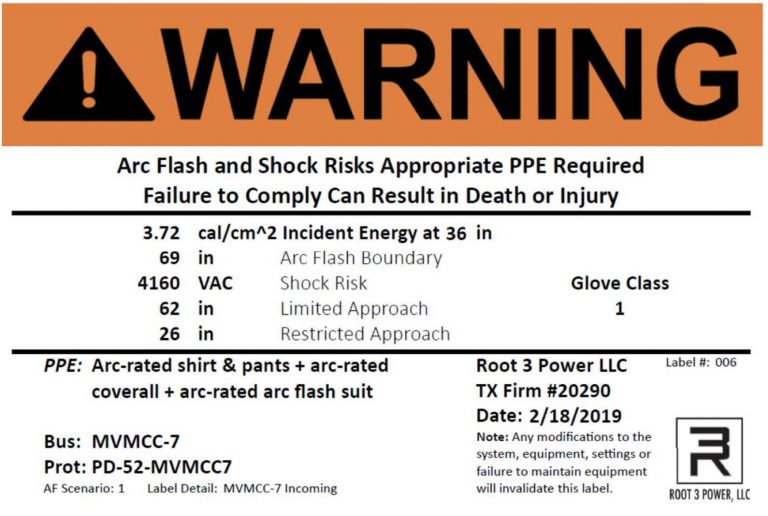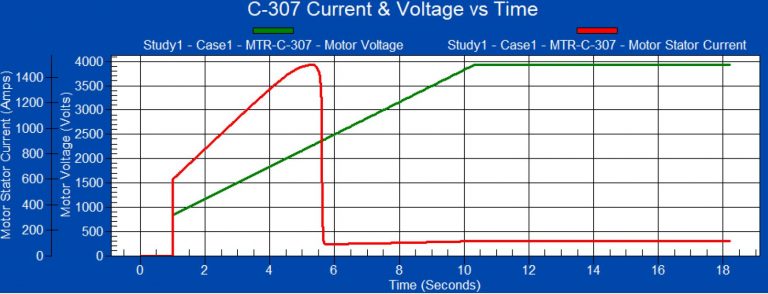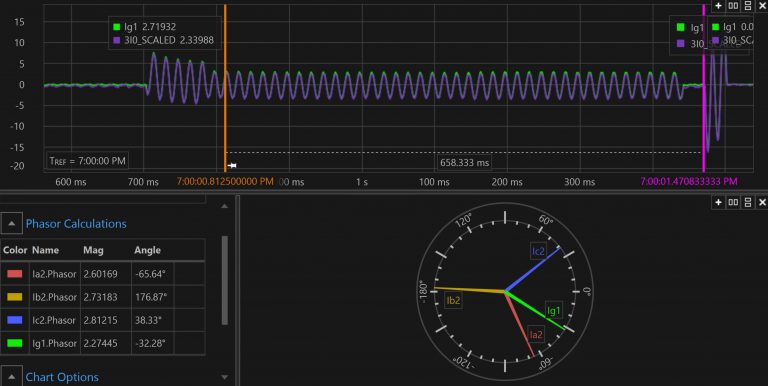Solutions Delivered

Arc-Flash Hazard Analysis
In 2018, IEEE 1584 was revised to more accurately predict the heat energy in an arcing-fault and its blast radius. New factors such as conductor orientation and enclosure size are factors in the updated equations. Root 3 Power has performed arc-flash hazard analysis using the IEEE 1584 methods for data gathering and calculating incident energy and arc-flash boundaries. We understand how to apply the standard to get accurate results without getting mired in the details.
A short-circuit equipment evaluation study is provided by Root 3 Power as the first step in determining the proper application and operation of electrical equipment. Because fault clearing time is a critical factor in determining arching-fault incident energy , a protective device coordination study is also performed prior to the arc-flash hazard analysis. And because fault clearing time is such a dominant factor in determining arcing fault incident energy, a protective device coordination study is always provided.
Root 3 Power provides a twofold report that quickly and clearly communicates the conclusions of the arc-flash hazard analysis while also thoroughly documenting the basis for those conclusions. A concise executive summary highlights equipment whose calculated duty is near or exceeds the equipment rating, contains a list of equipment with a noteworthy incident energy and provides a list of recommended protective device settings.

Transient Motor Starting Analysis
Root 3 Power has performed transient motor starting analysis to prove the capabilities of a system to start a motor across-the-line. The results of this study helped this client make a design decision to defer the option to install a solid-state soft starter untill a later date when more load was scheduled to be added to the facility.

Fault/Trip Analysis
Root 3 Power has retrieved and analyzed event data on several customers’ outages. Root 3 has been able to help customers determine that:
- That a plant outage was due to an external fault on a utility’s transmission line.
- That triplen harmonics was the reason that one motor’s multi-phase fault caused several other unfaulted motors in a facility to trip.
- That CT saturation (improper use of metering-class CT’s) was the reason for a transformer differential trip.
- That improper phase rotation was the reason for a motor protection relay tripping on thermal overload, despite the motor operating at lightly loaded conditions.
- That shorted CT’s were the root cause of a transformer differential trip at the instant a large motor was started.
Root 3 Power provides a twofold report with a concise executive summary of findings and recommendations, plus a thoroughly documented basis for those conclusions.
ENGINEERING SERVICES FOR ELECTRICAL INFRASTRUCTURE
